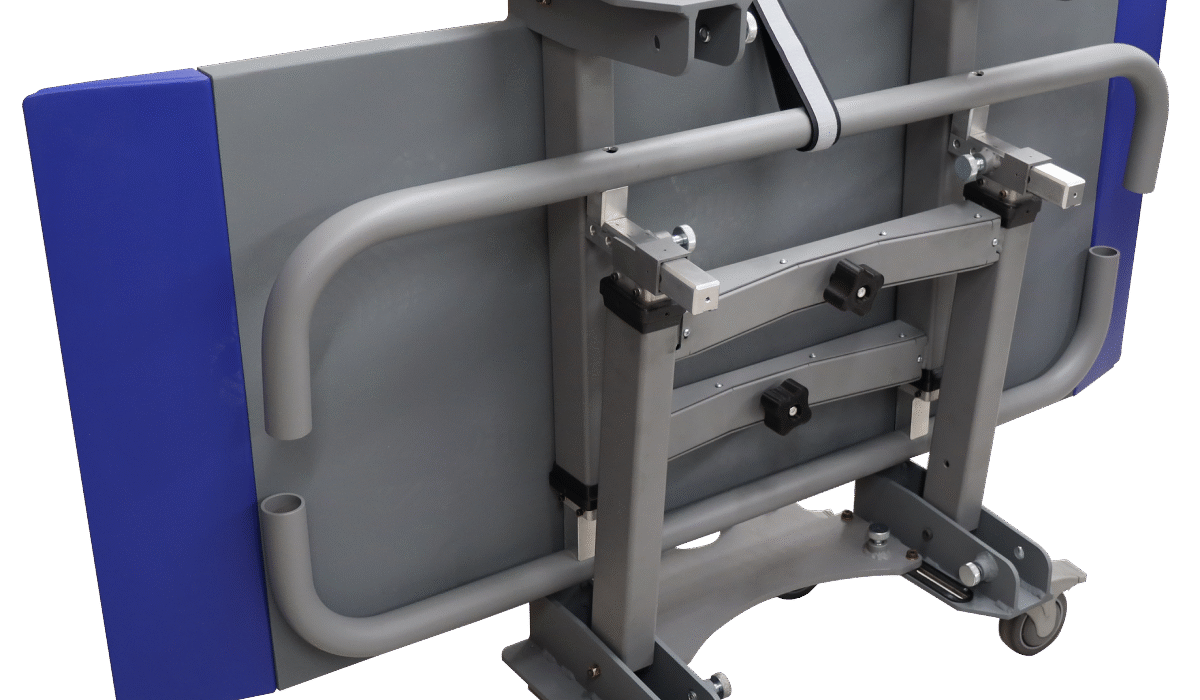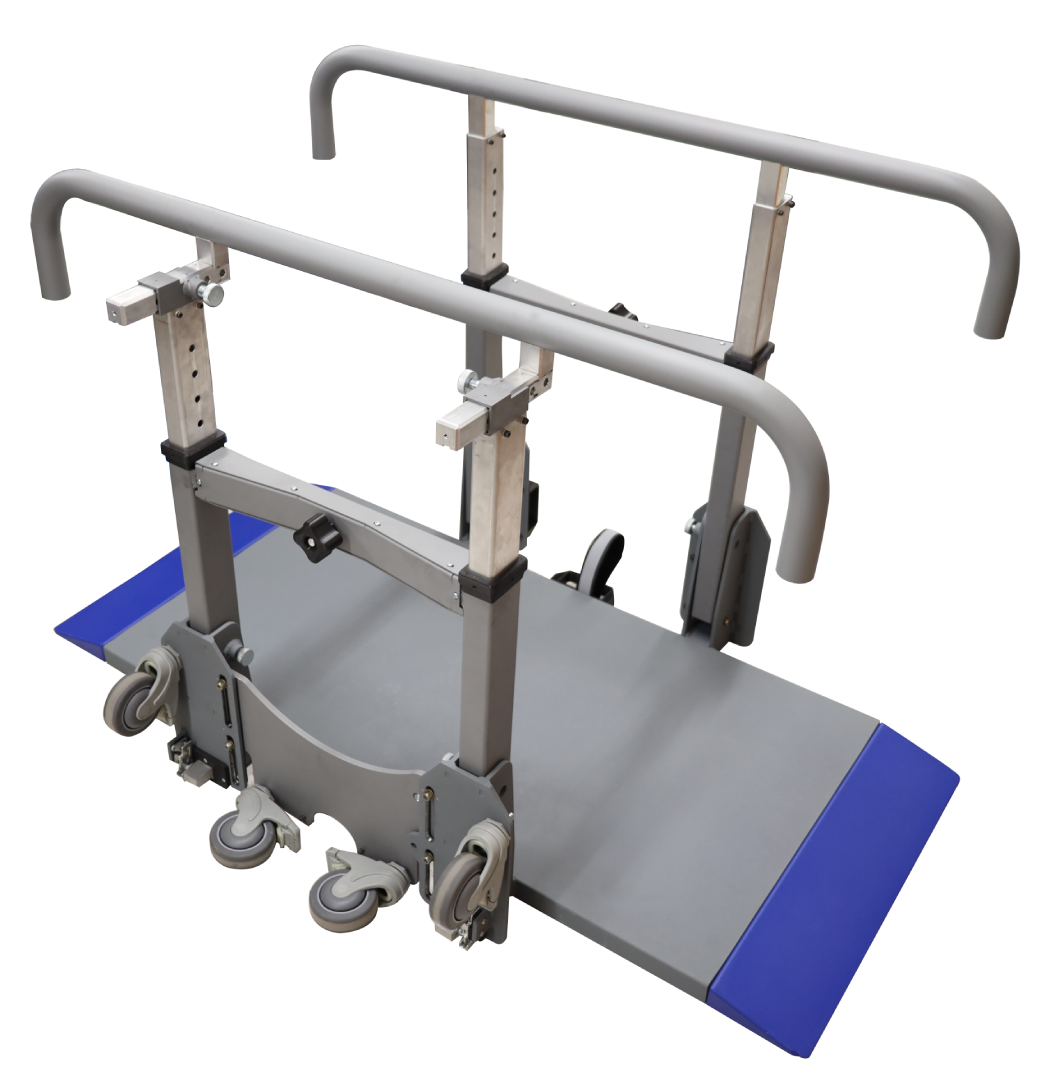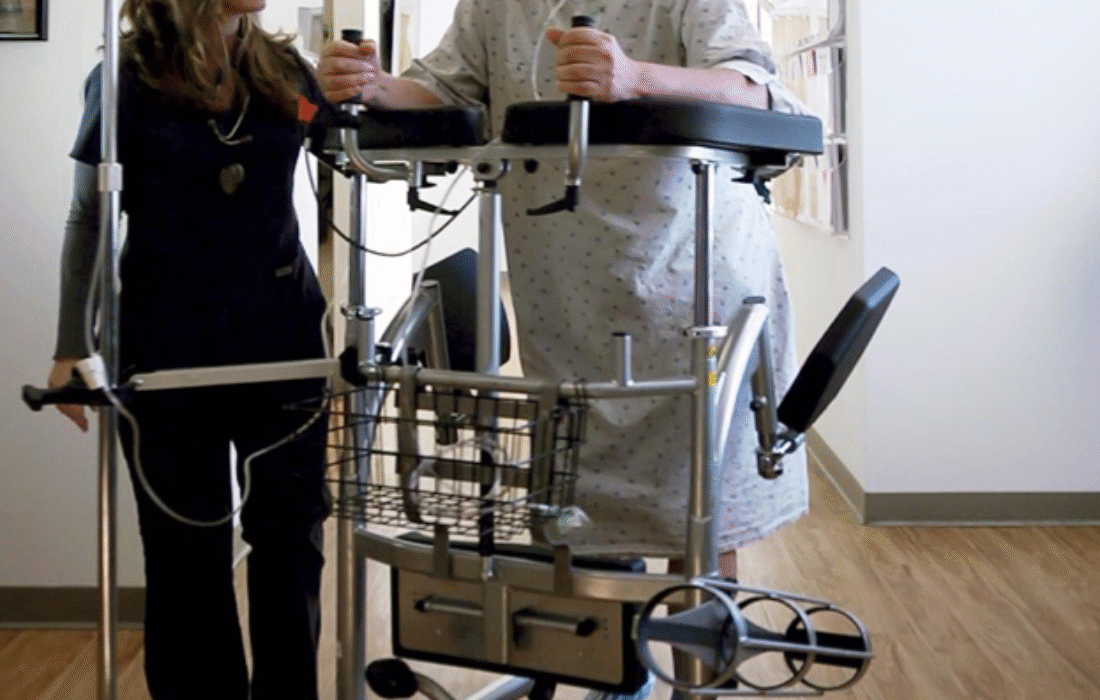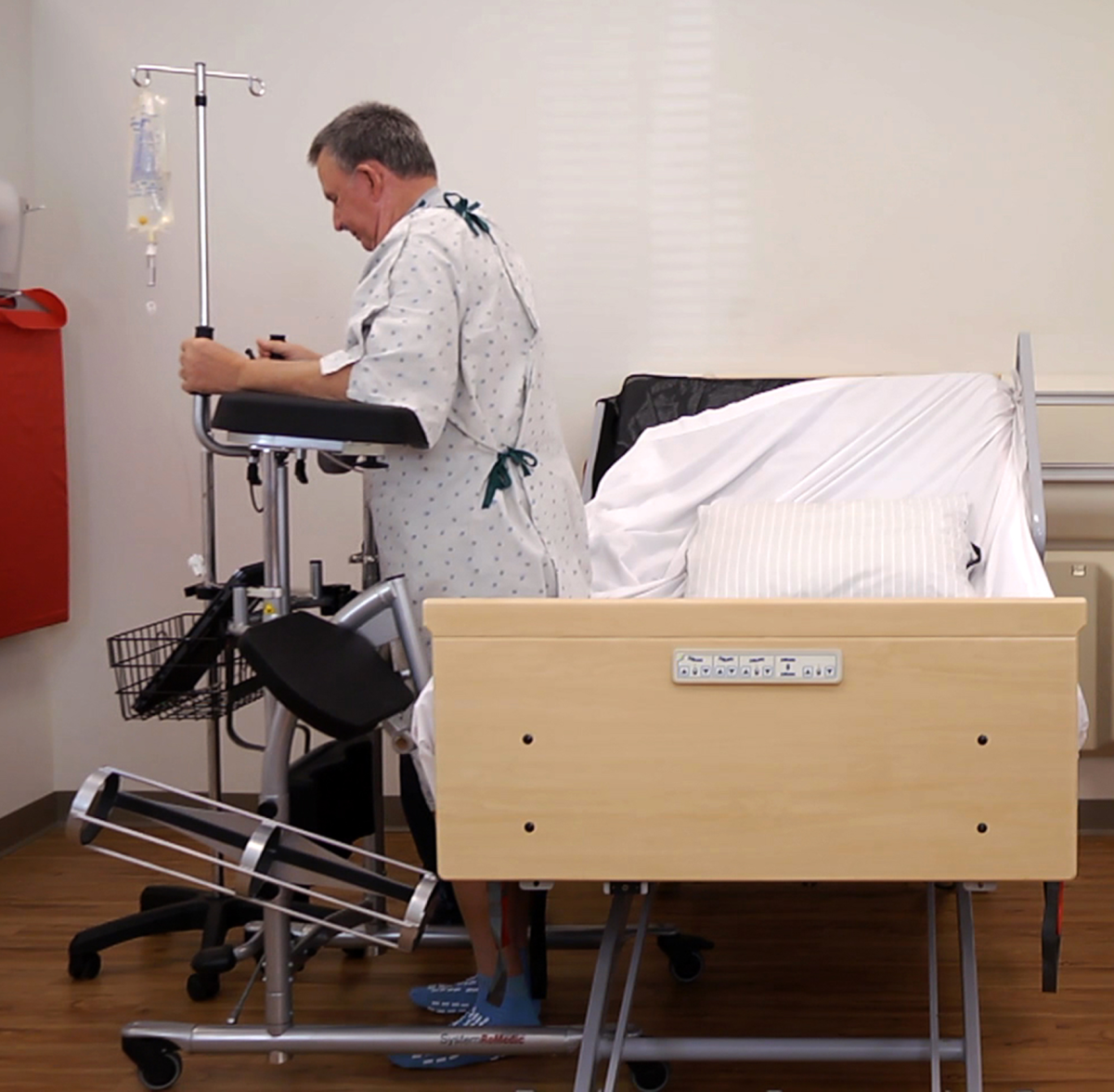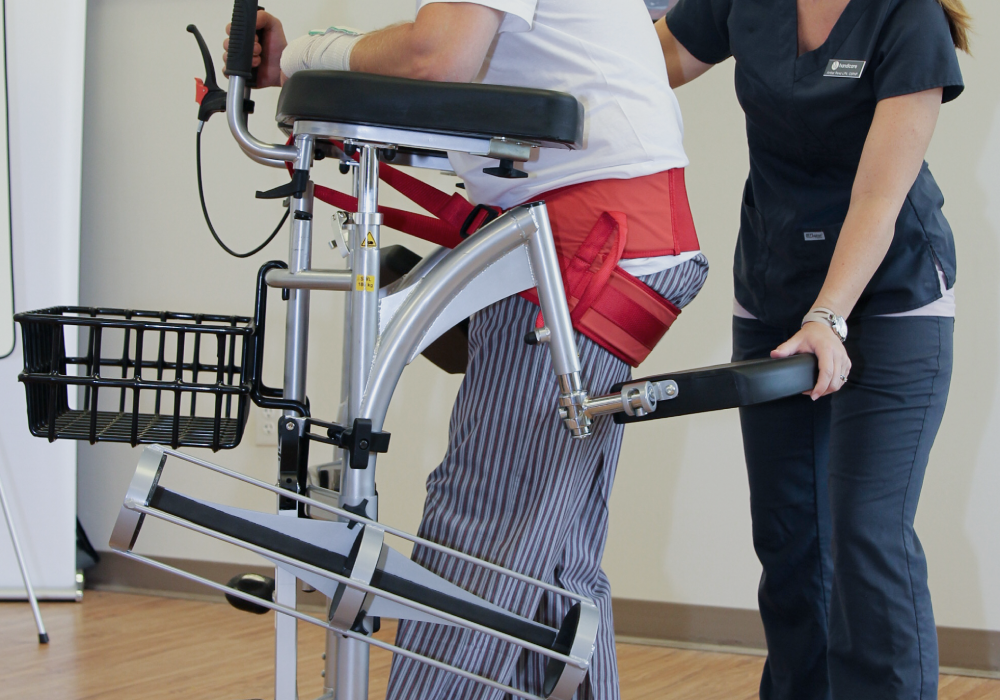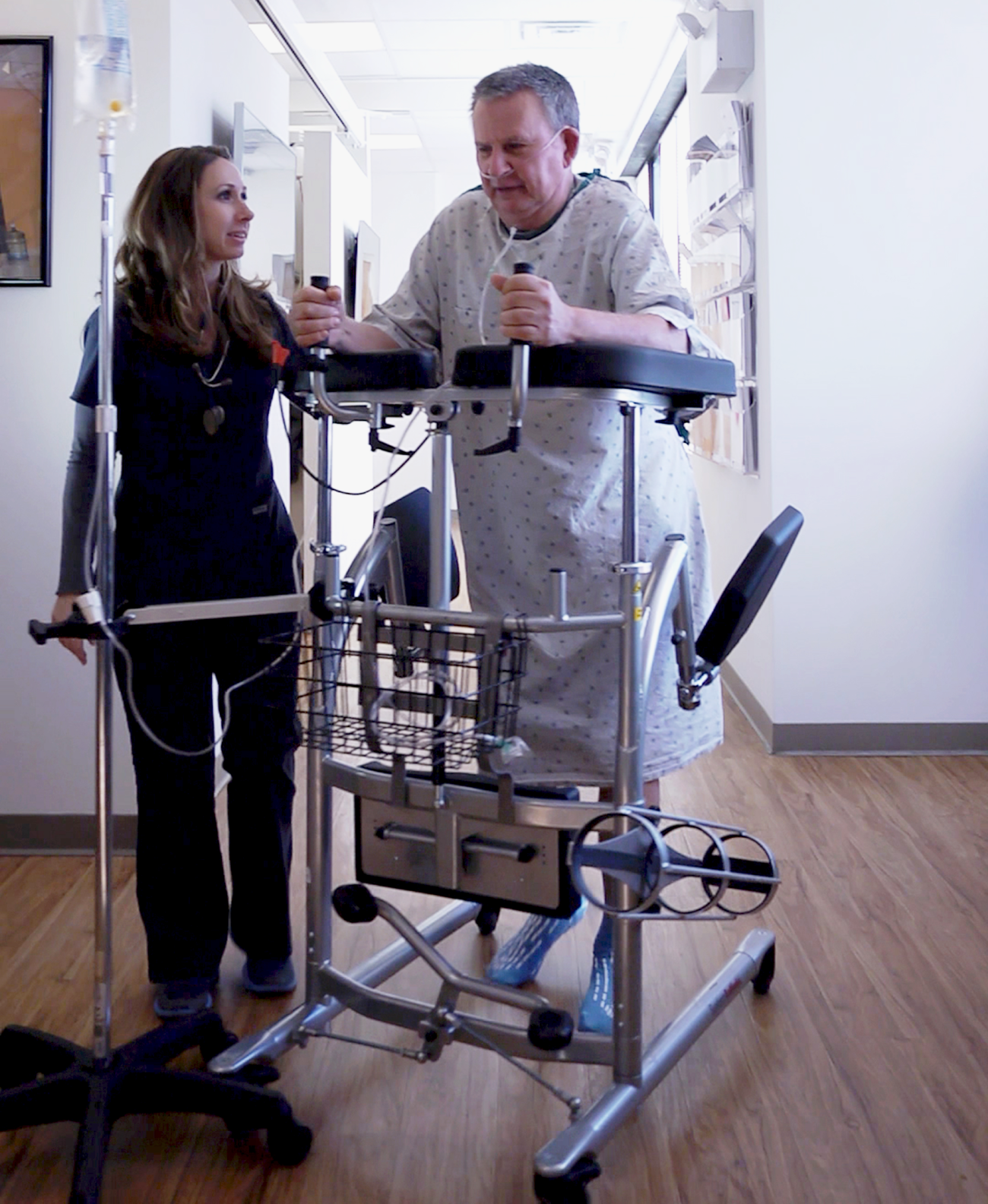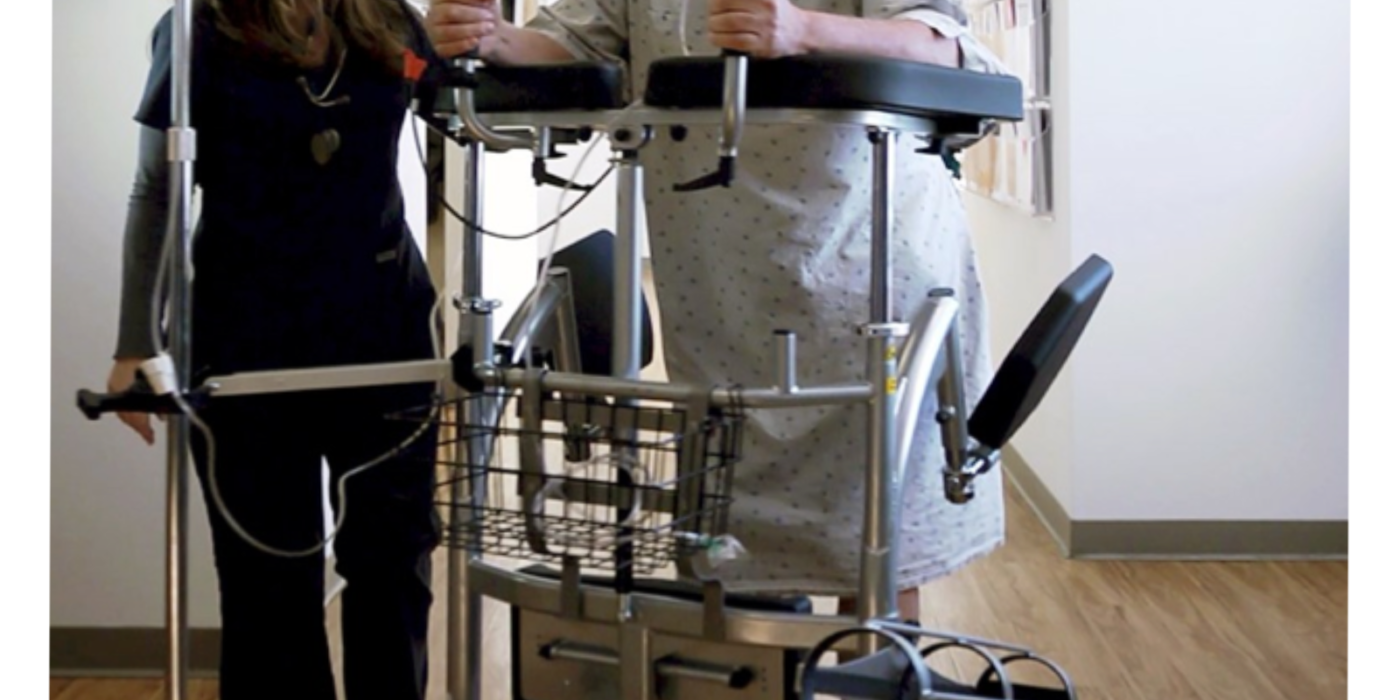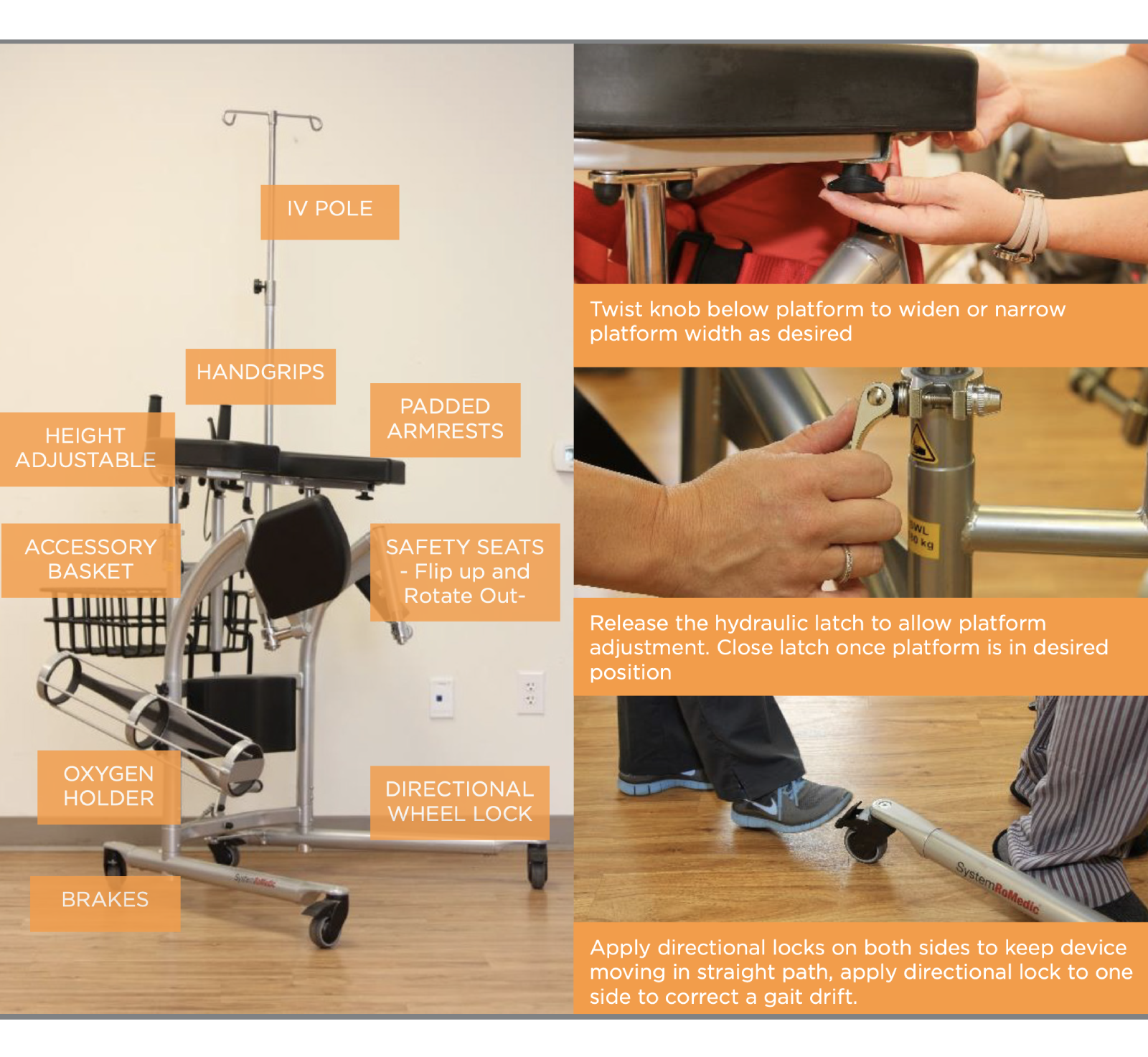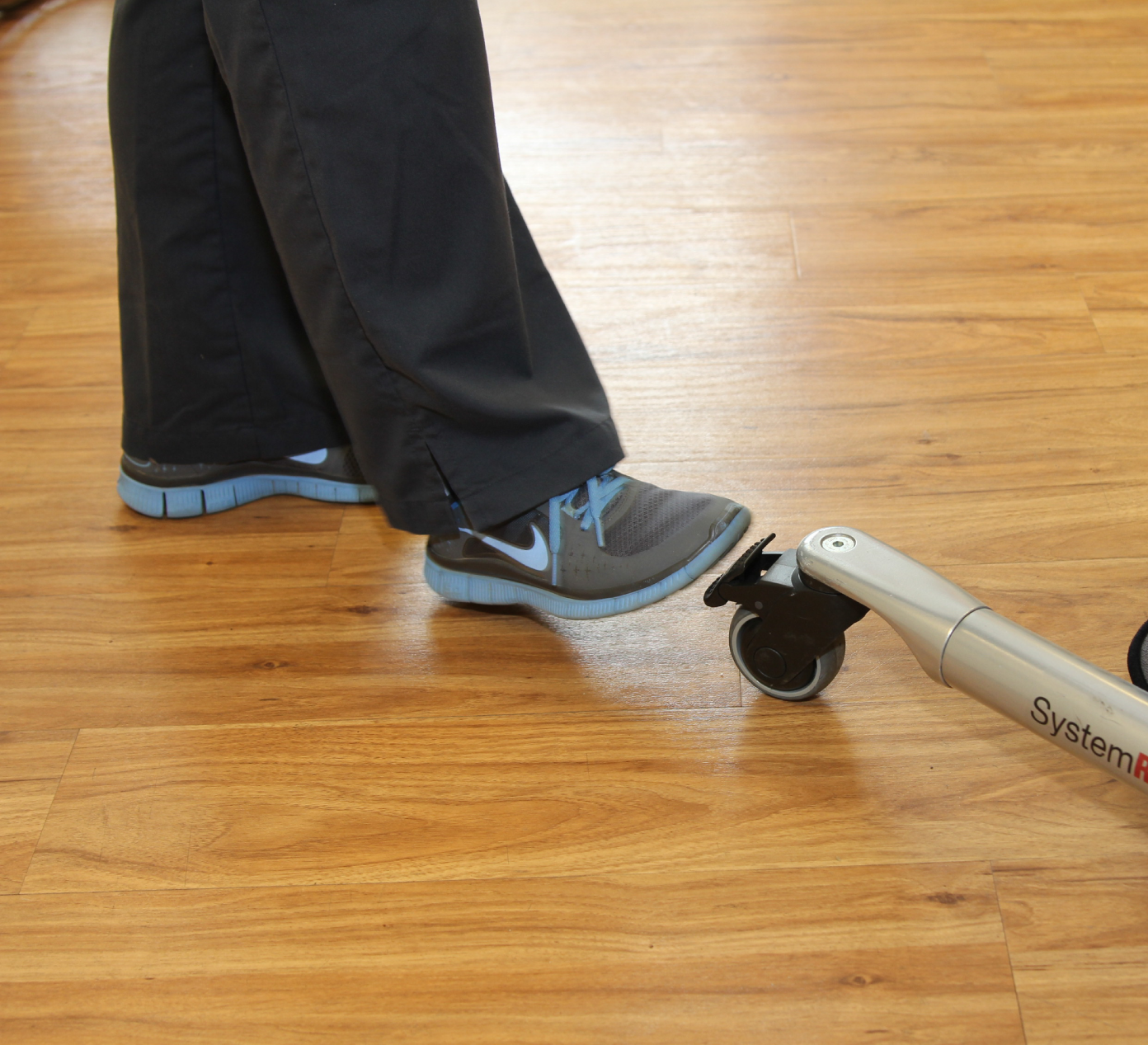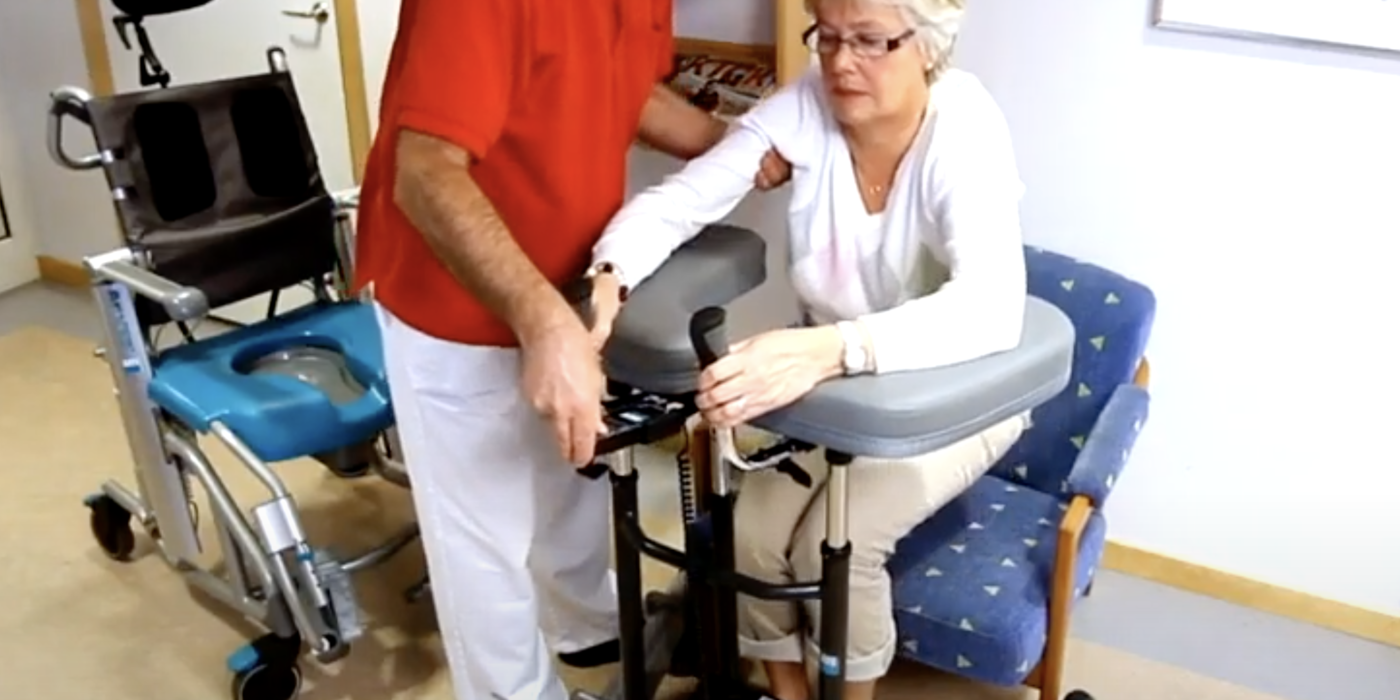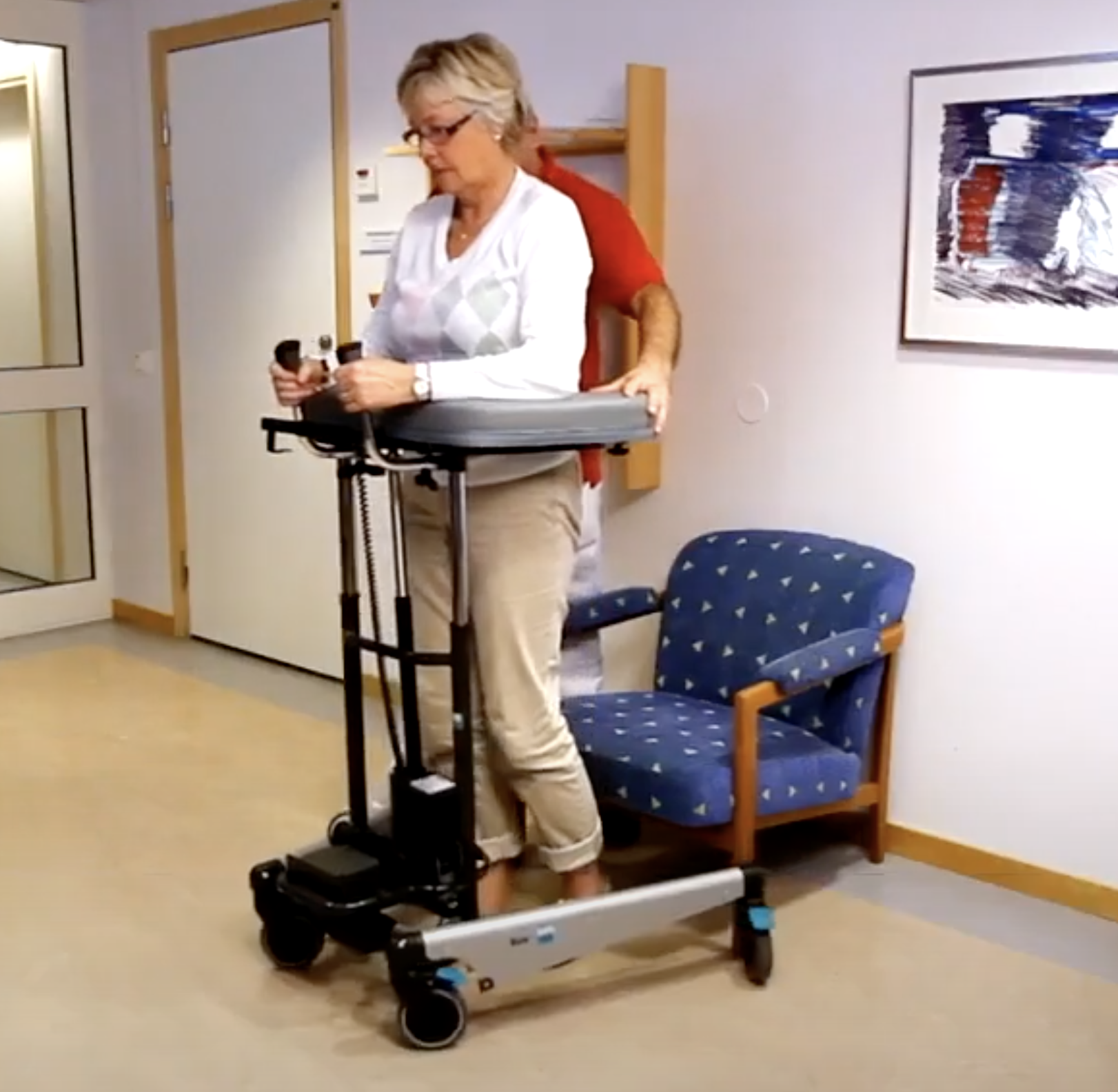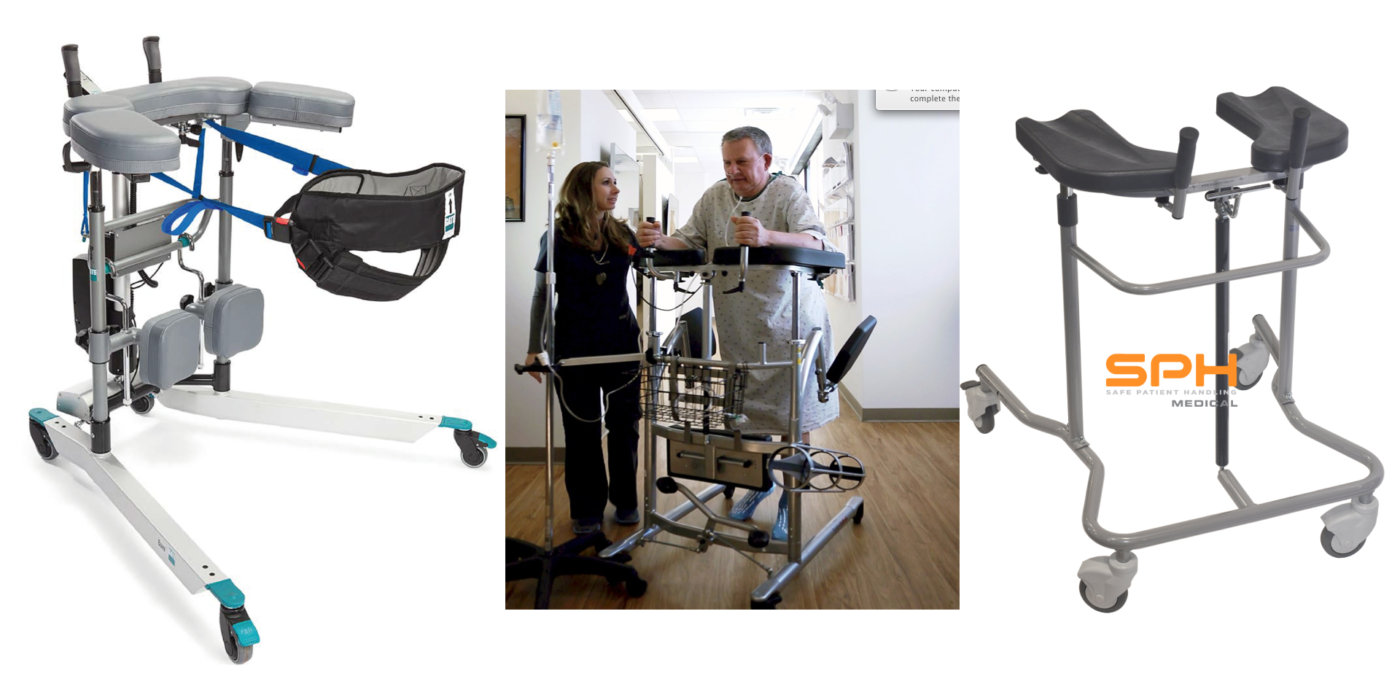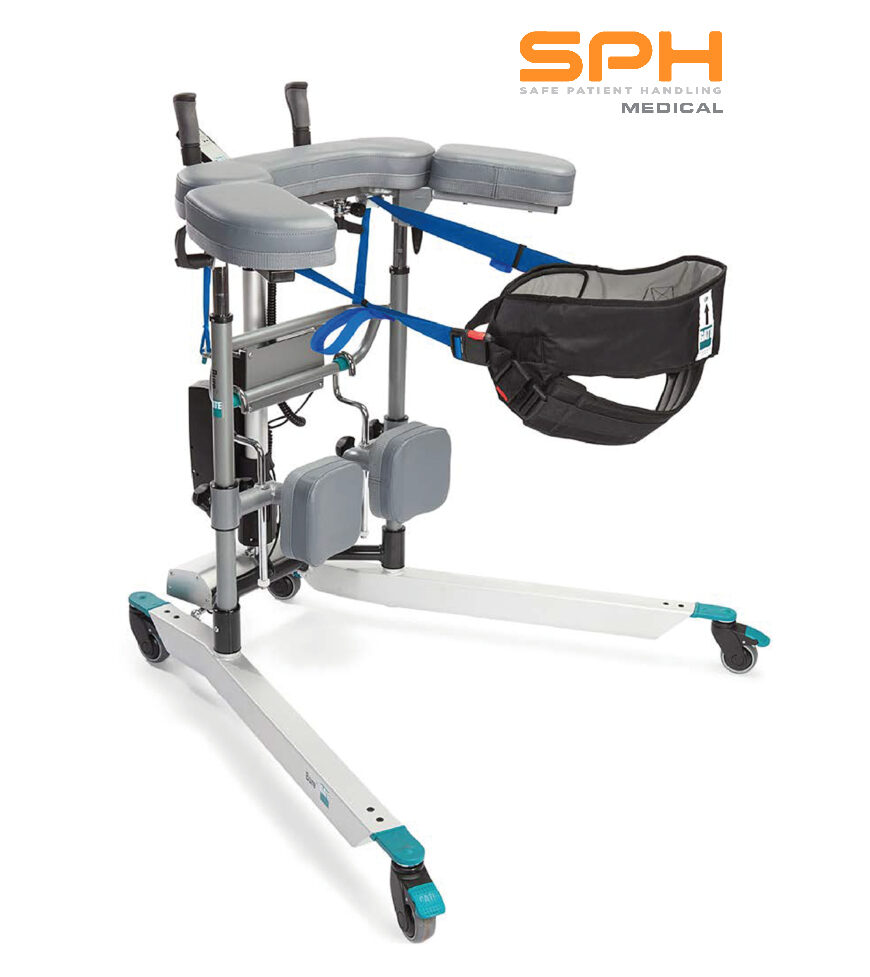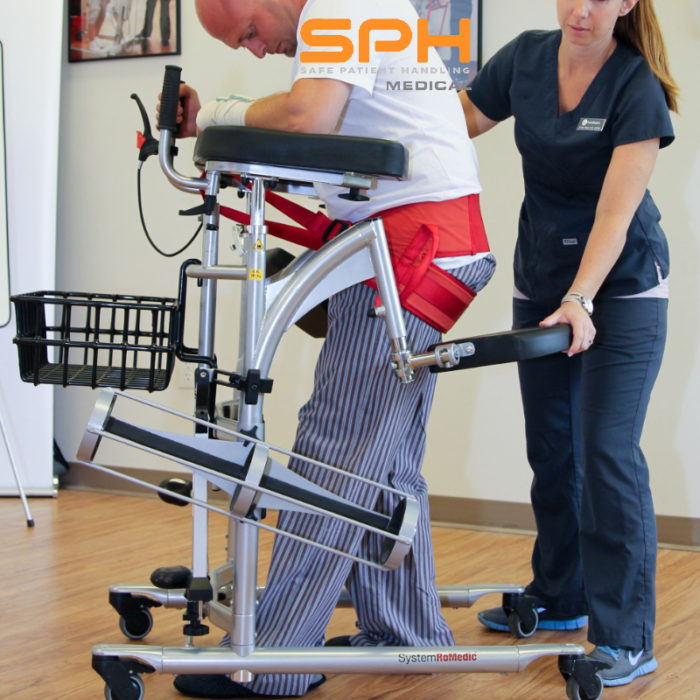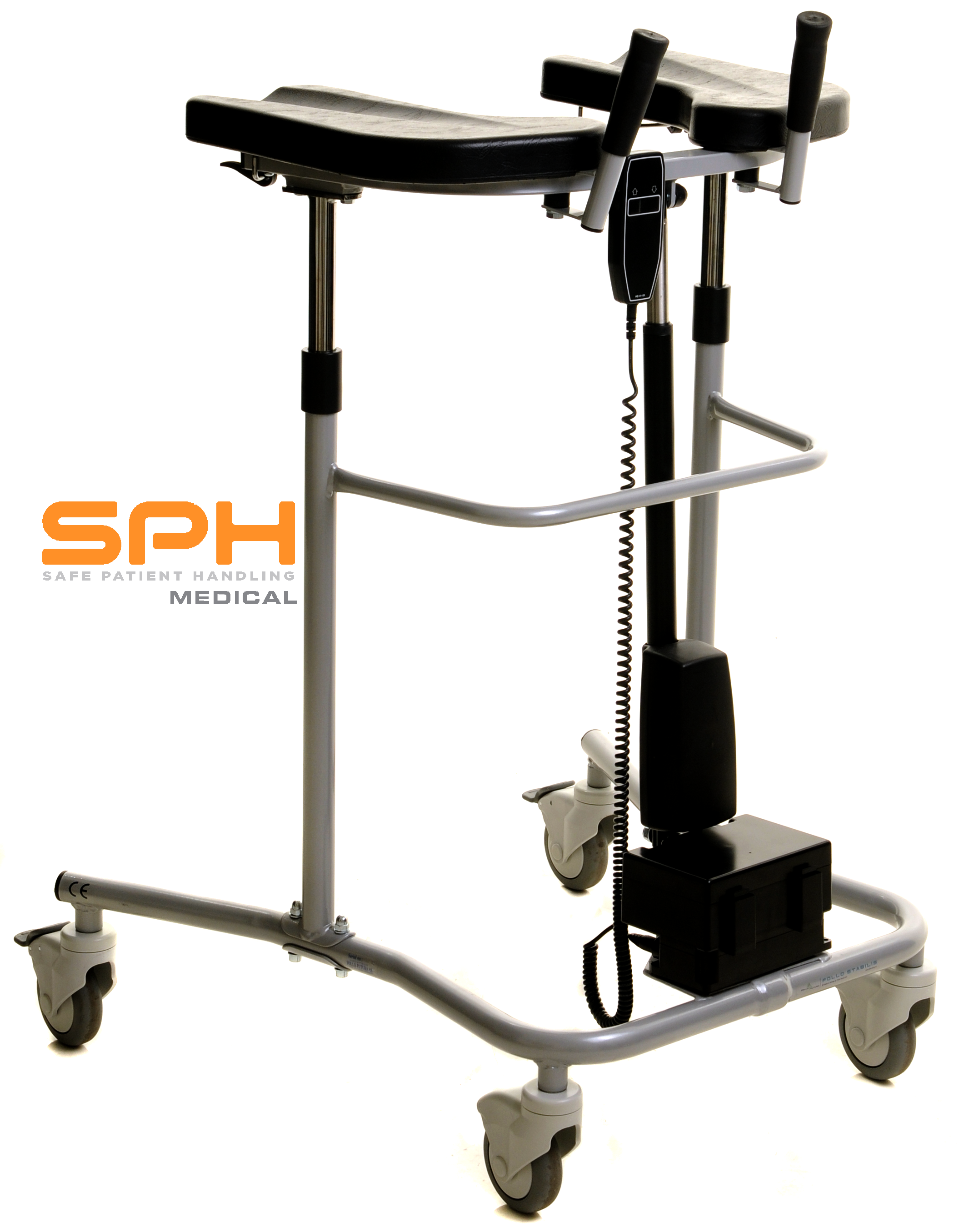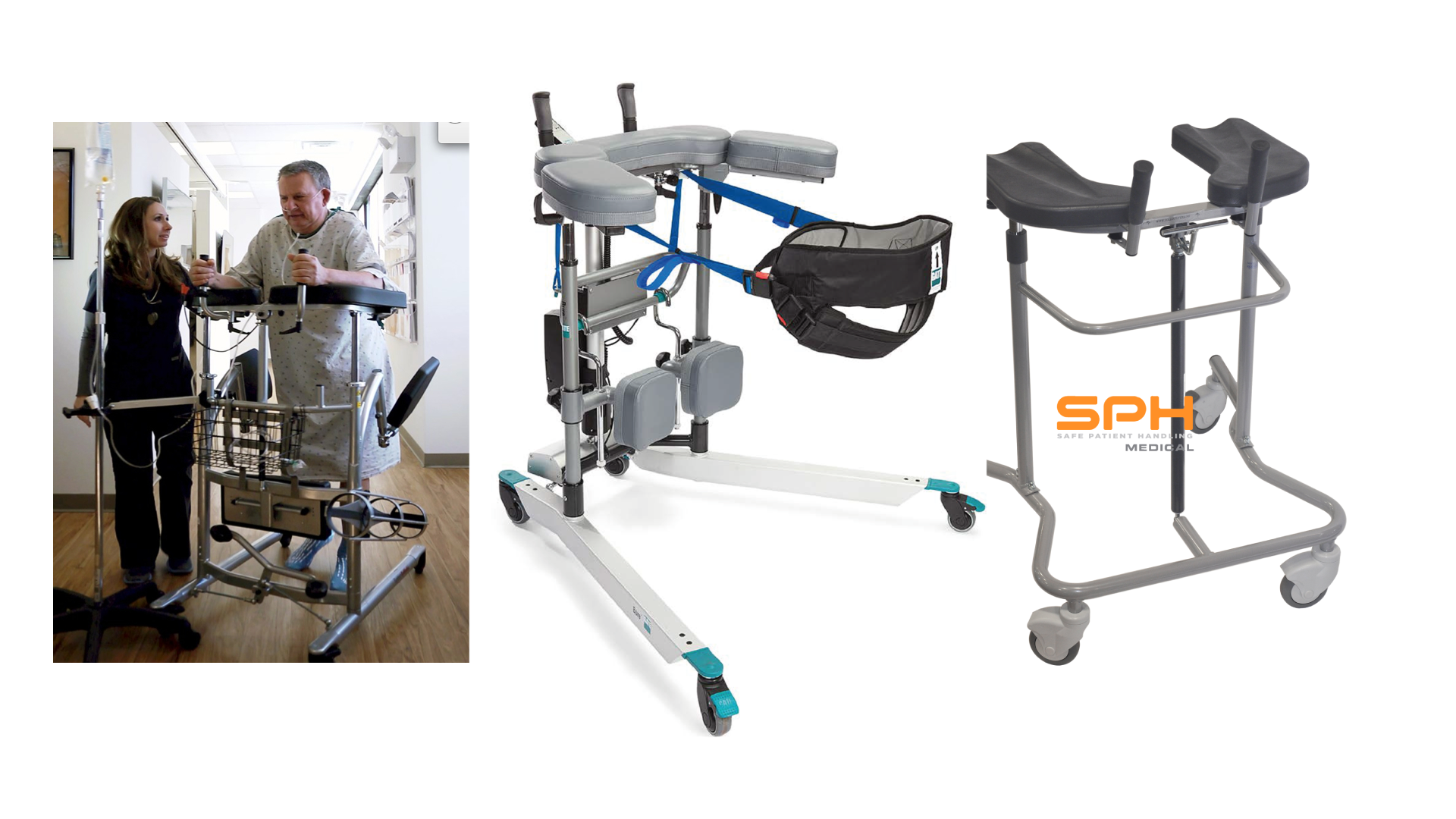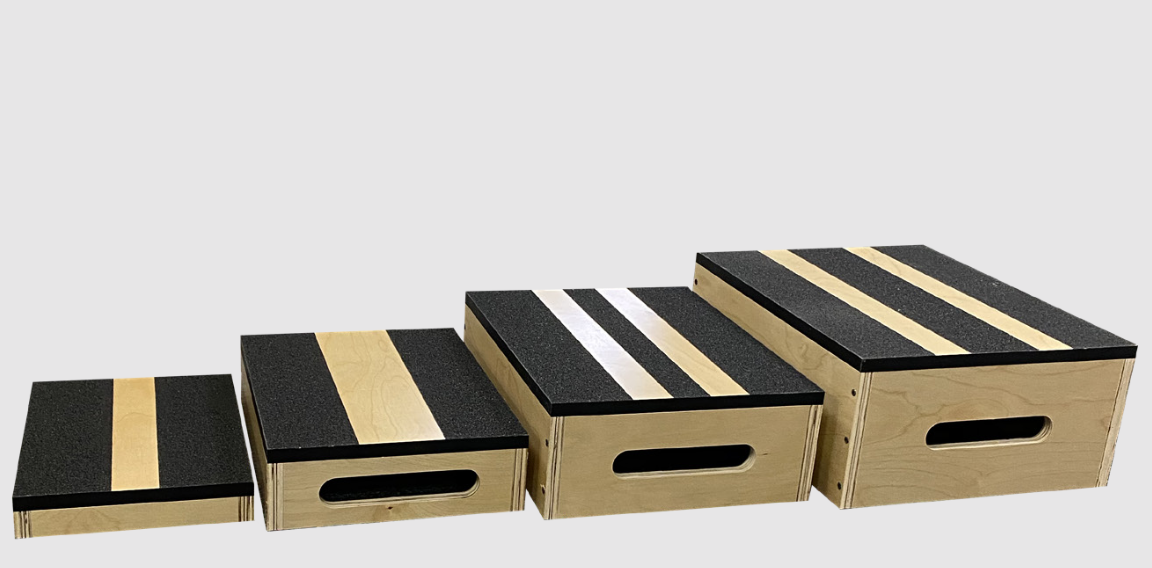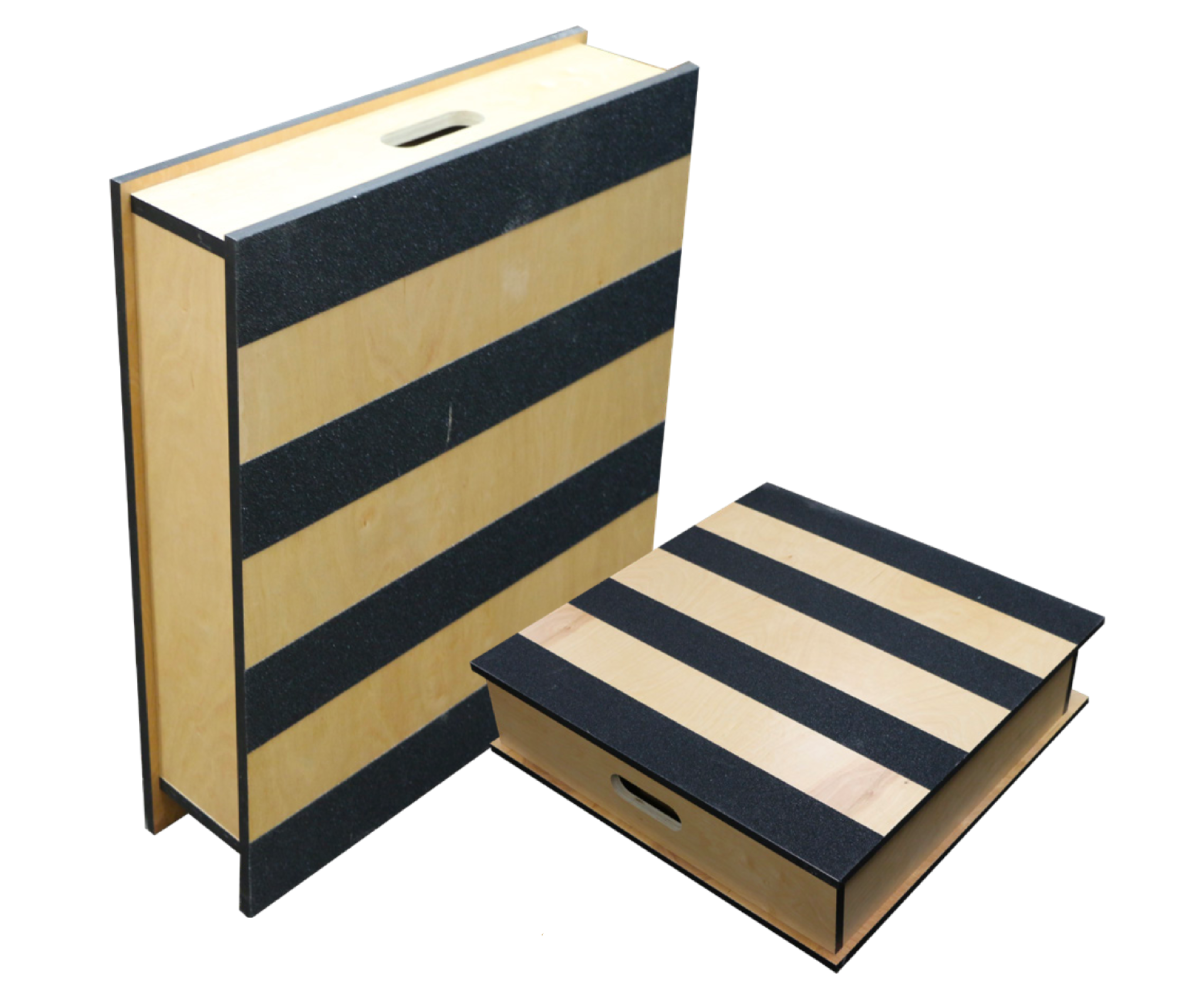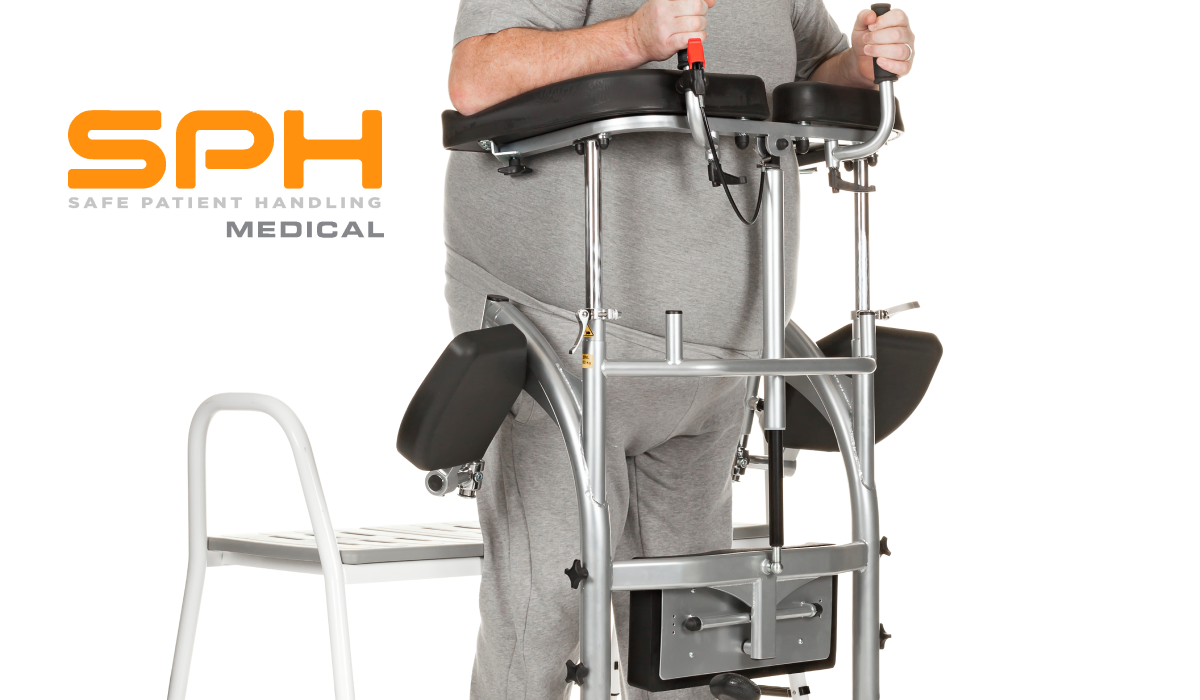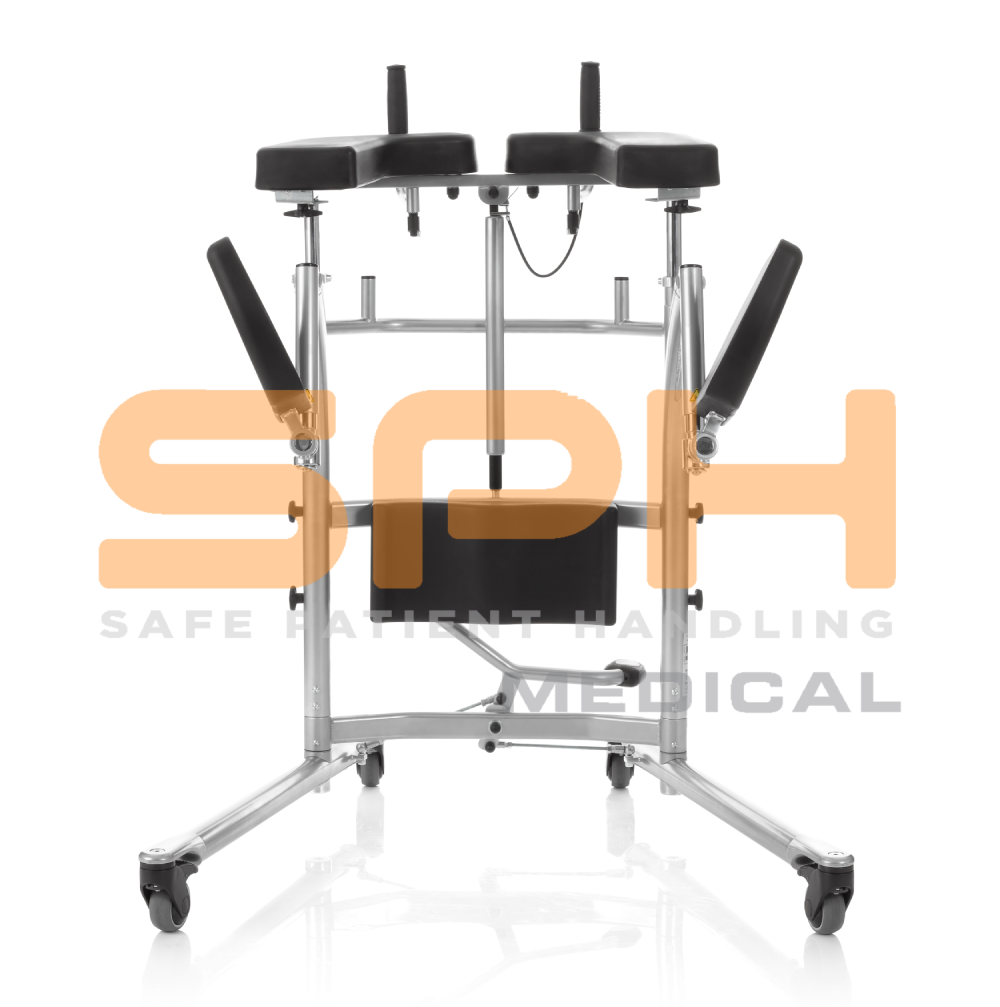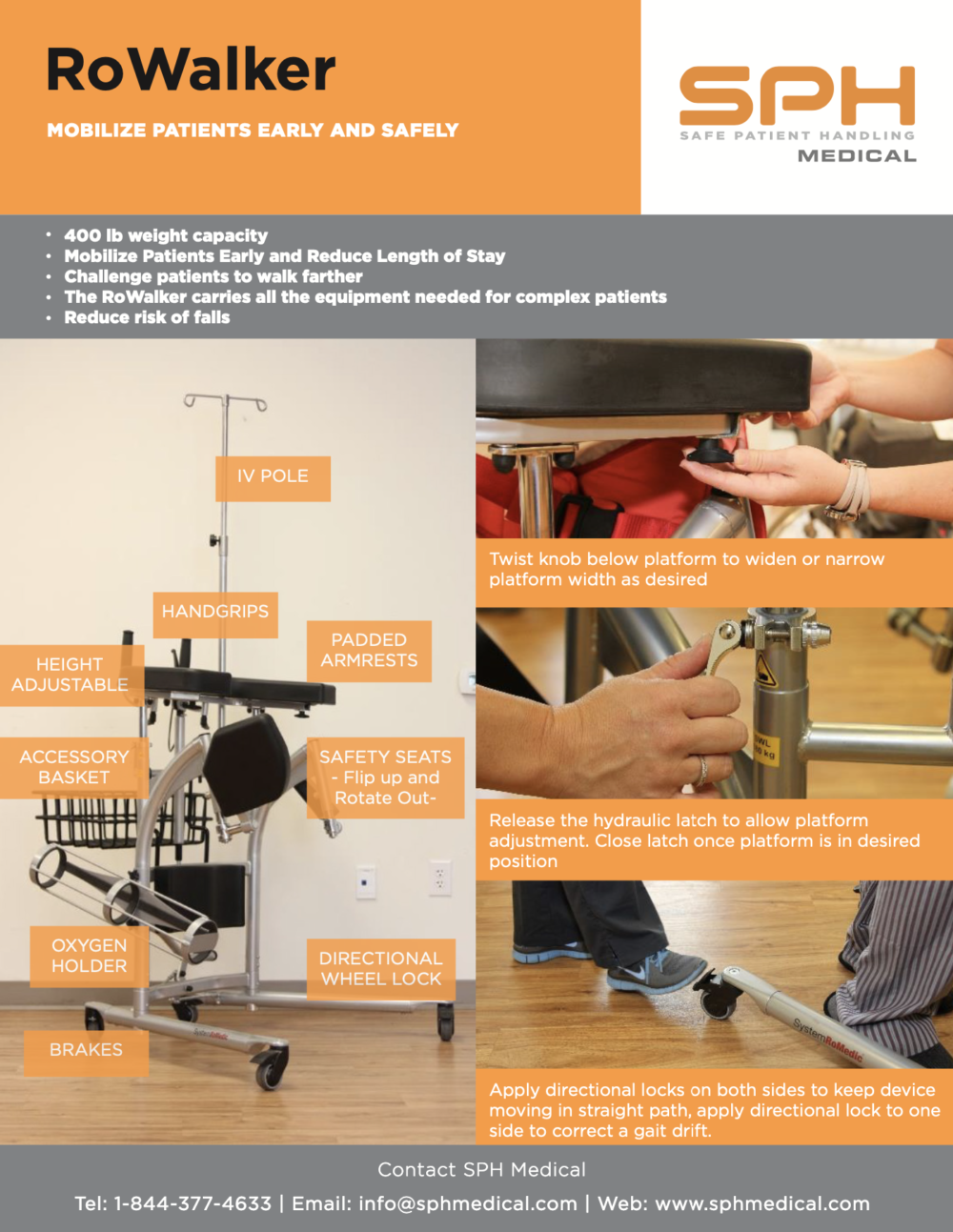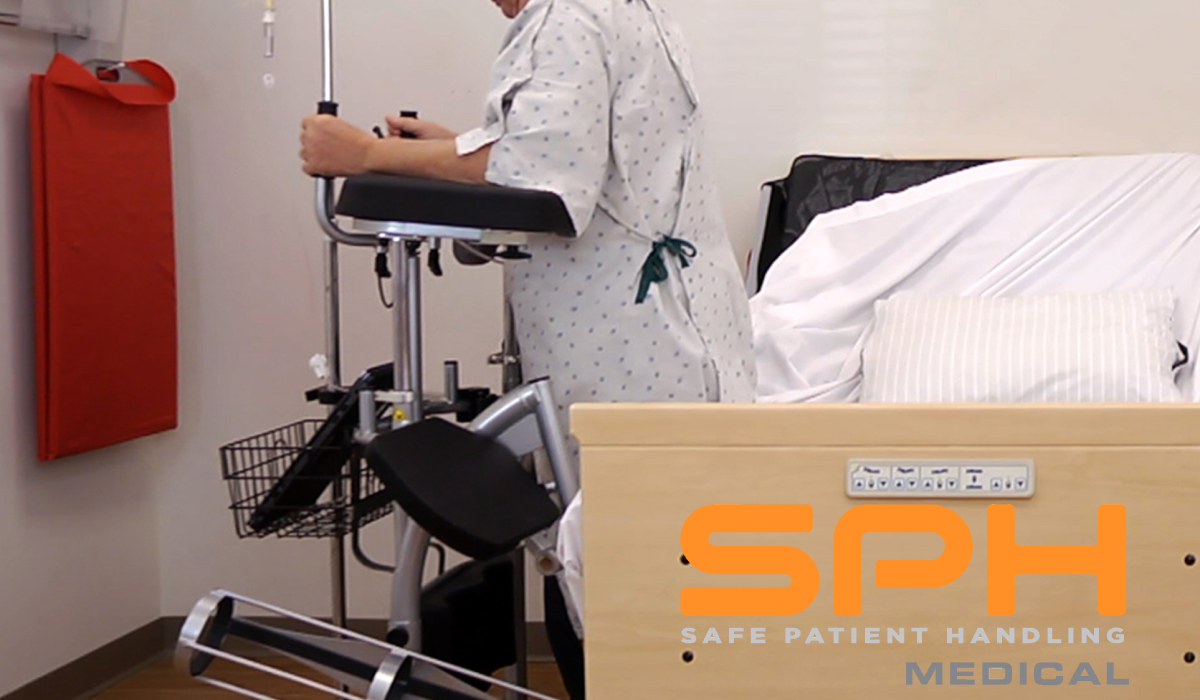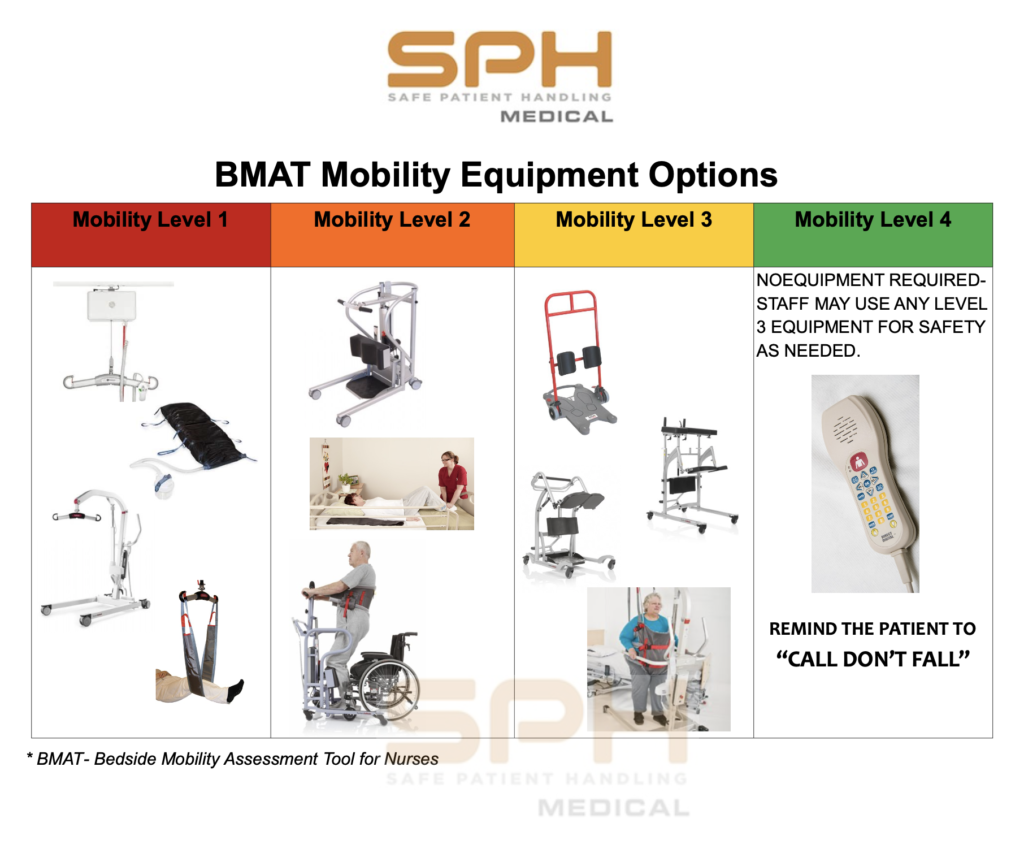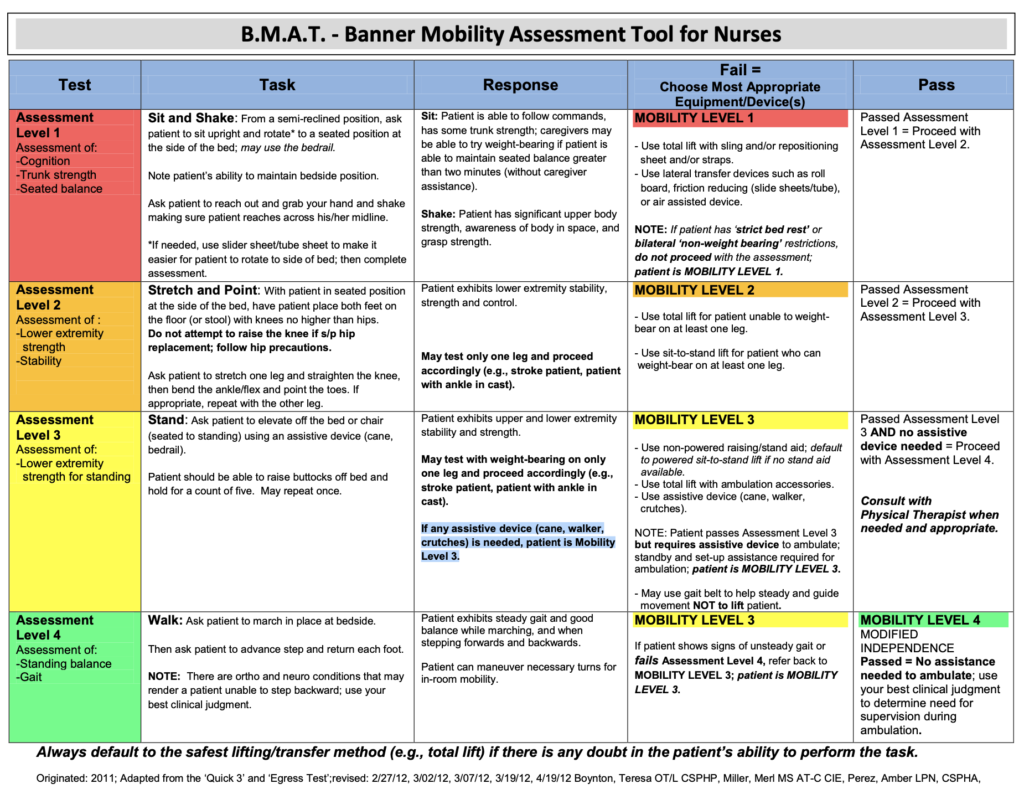The RoWalker: Gold Standard for ICU Early Mobility
For critically ill patients in the ICU, prolonged bed rest is a significant threat, often leading to severe deconditioning, muscle atrophy, and a host of complications that can dramatically increase their length of stay. The single most effective countermeasure is a proactive strategy of early and safe mobilization. This intervention is not just beneficial; it is essential for accelerating recovery and improving long-term outcomes.
This article will establish why early patient mobility is a critical component of modern ICU care. More importantly, it will demonstrate why the RoWalker is the proven gold standard for mobilizing deconditioned patients. We will explore its unparalleled ability to support complex medical equipment while ensuring maximum safety for both patients and the caregivers dedicated to their recovery. The RoWalker is an indispensable tool for any successful early mobility program, transforming a high-risk activity into a safe, efficient, and therapeutic intervention that gets patients back on their feet.
The Impact of Early Mobility on ICU Outcomes
The fight against immobility is a core battle in the ICU. The negative consequences of prolonged bed rest are well-documented and present a major barrier to patient recovery.
Dangers of ICU-Acquired Weakness
ICU-acquired weakness (ICU-AW) is a profound and debilitating condition affecting patients who experience extended periods of immobility. This leads to significant muscle atrophy, delirium, prolonged ventilator dependence, and an increased risk of deep vein thrombosis (DVT) and pressure ulcers. Clinical studies consistently link immobility to longer ICU and hospital stays, higher healthcare costs, and poor long-term functional outcomes for patients long after they are discharged. For WOCN-certified nurses and physical therapists, combating these hospital-acquired complications is a primary focus of their care.
The Clinical Evidence for Early Mobilization
The evidence is clear and overwhelming: early mobility programs work. A wealth of clinical research shows that these programs reduce the number of ventilator days, decrease the length of both ICU and hospital stays, and significantly improve patients’ functional status at discharge. By actively engaging patients in mobility as soon as it is safe to do so, healthcare facilities can directly improve patient outcomes, align with performance improvement goals, and boost patient satisfaction scores.
Overcoming Mobility Barriers with the RoWalker
While the benefits are clear, the practical execution of mobilizing a complex ICU patient is fraught with challenges. This is where purpose-built technology becomes essential.SPH Medical Rowalker Brochure 2025
The Challenge: Mobilizing an ICU Patient
Attempting to ambulate an ICU patient is a significant logistical and safety undertaking. These patients are often connected to a web of lines and devices, including ventilators, multiple IV pumps, cardiac monitors, and oxygen tanks. Managing this equipment while physically supporting a deconditioned patient creates a high-risk situation. It exposes staff to the danger of musculoskeletal injury from manual support and puts patients at risk of falls or the accidental dislodgement of life-sustaining lines.
The RoWalker: Purpose-Built for the ICU
The RoWalker is the definitive solution, engineered specifically to address these immense challenges. It is a robust mobility aid that serves two critical functions simultaneously: it provides stable, ergonomic support for the patient while acting as a mobile cart for all necessary medical equipment. This comprehensive design makes it the ultimate tool for early mobility.
Key features of the RoWalker include:
- High Weight Capacity and Unmatched Stability: The RoWalker is built to securely support patients. RoWalker also supports bariatric patients, with a wide, stable base that prevents tipping and instills confidence.
- Integrated Equipment Support: It features intelligently designed shelves, hooks, and mounts capable of carrying ventilators, IV poles, oxygen tanks, and monitors. This allows all life-support equipment to move seamlessly with the patient.
- Ergonomic Patient Support: The device includes adjustable supports for the patient’s torso and arms. This promotes a secure, upright posture and allows patients to bear weight safely, even when severely deconditioned. A built-in seat offers a safe resting place if needed.
- Directional Casters: The rear wheels include directional locks that can be engaged to help steer the walker more easily.
- Wheel locks or brakes on the front casters allow safe access to the RoWalker.
The Gold Standard in Action: Benefits for All
The RoWalker is more than just a walker; it is a therapeutic device that empowers patients and protects the clinical staff who care for them.
Empowering Patients, Accelerating Recovery
For a deconditioned patient, the thought of getting out of bed can be frightening. The RoWalker provides the essential physical support and psychological confidence they need to take those first critical steps. By facilitating a more natural gait and upright posture, the SPH Medical RoWalker accelerates the rehabilitation process, and improves respiratory function. This mobilization helps clear the fog of ICU delirium. This journey from the first steps with the RoWalker to improved functional independence is a powerful motivator for patients and a clear indicator of progress for the clinical team.
Protecting Caregivers and Enhancing SPH Programs
The RoWalker is a cornerstone of any effective Safe Patient Handling (SPH) program. It dramatically reduces the immense physical strain on nurses and physical therapists. These goals directly alignin with national safety standards from the ANA, APTA, and AORN. By using the RoWalker, a complex mobilization task that might have previously required four or five staff members can often be managed safely by just one or two. This not only mitigates the risk of career-ending injuries but also improves workflow efficiency by freeing up clinical resources.
Early patient mobility is not a luxury in the ICU; it is a critical necessity for improving patient outcomes. The RoWalker stands alone as the gold standard in mobility aids. RoWalker provides the unparalleled stability and integrated equipment support required to make early mobilization safe, effective, and efficient. By investing in the RoWalker, facilities are investing in shorter lengths of stay, better patient outcomes, and a safer work environment for their invaluable staff.
Elevate your ICU’s early mobility program and protect your staff from injury. Contact SPH Medical today to discover how the RoWalker can help you achieve your goals for patient recovery and staff safety.
Share the SPH Medical Rowalker Brochure 2025 with your team to promote early mobility at your facitlity.


